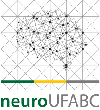Banca de QUALIFICAÇÃO: LAVÍNIA MITIKO TAKARABE
Uma banca de QUALIFICAÇÃO de MESTRADO foi cadastrada pelo programa.STUDENT : LAVÍNIA MITIKO TAKARABE
DATE: 27/06/2024
TIME: 14:00
LOCAL: Remoto
TITLE:
From Population to Place Coding: Mechanistic Insights into the Transformation of ITD Representation along the Auditory Pathway
PAGES: 30
BIG AREA: Ciências Biológicas
AREA: Biofísica
SUBÁREA: Biofísica de Processos e Sistemas
SUMMARY:
The Interaural Time Difference (ITD) is one of the main acoustic cues employed by animals to locate sound sources in the environment. Over the years, multiple studies have demonstrated that numerous auditory neurons are sensitive to ITDs. However, experimental results reveal that different species employ distinct solutions to represent ITDs in subcortical areas and in the cortex. For instance, in the midbrain of owls, the strategy is place coding, characterized by narrow tuning curves with peaks that uniformly span ITD space. Conversely, recent work on the midbrain of gerbils shows a population coding strategy, in which broad tuning curves have peaks that over-represent ITDs corresponding to locations in the contralateral hemifield. This project is based on evidences that ITD representations undergo significant transformations between the midbrain and the auditory cortex. In owls, there is a shift from a place code in the midbrain to a population code in the forebrain, while in gerbils, this transformation occurs in the opposite direction.
Acknowledging that different sensory subsystems may employ similar computational strategies, we drew inspiration from the literature on orientation selectivity in the visual system to elucidate the mechanisms underlying this transformation of ITD representation. Hansel and van Vreeswijk (2012) showed that randomly connected balanced networks can considerably narrow neuronal spike responses, giving rise to strong selectivity from weakly modulated feedforward and recurrent inputs. Subsequent works also demonstrated that networks in an inhibition-dominated regime could enhance orientation selectivity and observed a shift in the neurons' preferred orientations due to stronger recurrence in the network. In light of these results, we hypothesize that sharper and more uniformly distributed tuning curves may emerge due to a combination of balanced recurrent connectivity and feedforward feature mixing.
In order to test this hypothesis, we implemented a randomly connected spiking neural network with strong recurrence to explain the transformation of ITD representation between the inferior colliculus and the primary auditory cortex of gerbils. We show that depending on the recurrence strength, inhibition-dominated networks sharpen the input tuning curves and uniformize the distribution of peaks, which serves as a possible mechanism for transforming a population code into a place code. However, as the recurrent strength increases, the network loses stability and becomes dominated by noise. We are currently investigating how different learning rules can balance the contributions of feedforward and recurrent input — as well as nonspecific noise — to match the tuning curve distributions observed along the auditory pathway, and how the function of each of these structures could be linked with the corresponding coding strategy.
COMMITTEE MEMBERS:
Membro Titular - Examinador(a) Interno ao Programa - 1766041 - MARCELO BUSSOTTI REYES
Membro Titular - Examinador(a) Externo à Instituição - FERNANDA SELINGARDI MATIAS - UFAL
Membro Titular - Examinador(a) Externo à Instituição - PEDRO VALADÃO CARELLI
Membro Suplente - Examinador(a) Interno ao Programa - 1672975 - JOAO RICARDO SATO
Membro Suplente - Examinador(a) Externo à Instituição - ANTÔNIO CARLOS ROQUE DA SILVA FILHO
Membro Suplente - Examinador(a) Externo à Instituição - NESTOR FELIPE CATICHA ALFONSO




